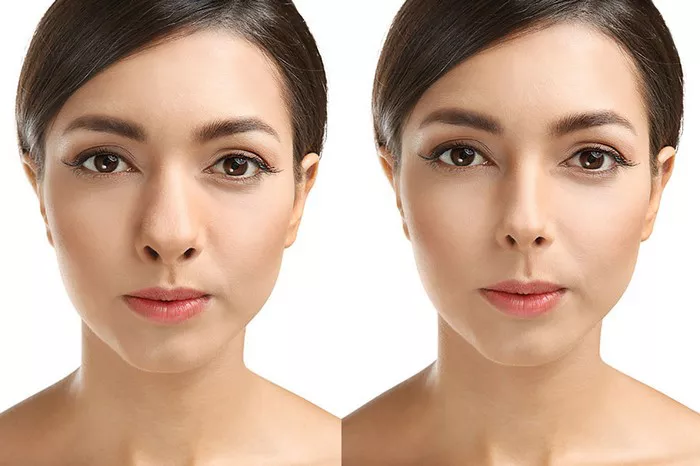Rhinoplasty is a surgical procedure that is used to reshape the nose. While the cost of the procedure can vary depending on a number of factors, such as the surgeon’s experience and the geographic location of the practice, one important cost to consider is the anesthesia cost for rhinoplasty. In this article, we will explore what this cost involves, and what patients can expect to pay for anesthesia during a rhinoplasty procedure.
What is Anesthesia Cost for Rhinoplasty?
Anesthesia is a medication that is used to put the patient to sleep during a surgical procedure. It is typically administered by an anesthesiologist, who monitors the patient’s vital signs and adjusts the medication as needed to ensure their safety and comfort.
The cost of anesthesia for rhinoplasty can vary depending on a number of factors, such as the type of anesthesia used, the duration of the procedure, and the geographic location of the practice.
What are the Types of Anesthesia for Rhinoplasty?
There are three main types of anesthesia that can be used during a rhinoplasty procedure:
General anesthesia: This type of anesthesia puts the patient to sleep for the duration of the procedure. It is typically administered through an IV, and the patient is monitored closely by an anesthesiologist.
Local anesthesia with sedation: This type of anesthesia involves the injection of a local anesthetic to numb the area around the nose, combined with a sedative to help the patient relax. The patient remains awake during the procedure, but is typically not aware of what is happening.
Local anesthesia: This type of anesthesia involves the injection of a local anesthetic to numb the area around the nose. The patient remains awake during the procedure and is typically able to communicate with the surgeon throughout the procedure.
What is the Cost of Anesthesia for Rhinoplasty?
The cost of anesthesia for rhinoplasty can vary depending on a number of factors. On average, patients can expect to pay between $500 and $1,500 for anesthesia during a rhinoplasty procedure.
This cost typically includes the services of the anesthesiologist, as well as any necessary medications or monitoring equipment. However, patients should be aware that this cost may not include any additional expenses, such as pre-operative testing or post-operative medications.
What Factors Can Affect the Cost of Anesthesia for Rhinoplasty?
There are several factors that can affect the cost of anesthesia for rhinoplasty. These include:
Type of anesthesia: General anesthesia typically costs more than local anesthesia with sedation or local anesthesia alone.
Duration of the procedure: The longer the procedure, the more anesthesia is required, which can increase the cost.
Geographic location: The cost of living and the cost of doing business can vary depending on the geographic location of the practice, which can affect the overall cost of anesthesia.
Additional expenses: Patients may incur additional expenses, such as pre-operative testing or post-operative medications, which can add to the overall cost of anesthesia.
Conclusion:
Anesthesia is an important part of the rhinoplasty procedure, ensuring the patient’s safety and comfort during the surgery. While the cost of anesthesia for rhinoplasty can vary depending on a number of factors, patients can expect to pay between $500 and $1,500 on average.
It is important for patients to discuss their options and potential costs with their surgeon and anesthesiologist during their initial consultation. Patients should also check with their insurance provider to determine whether their policy covers anesthesia for rhinoplasty, and what their out-of-pocket costs may be.
Overall, understanding the anesthesia cost for rhinoplasty is an important part of preparing for the procedure, helping patients to budget appropriately and make informed decisions about their care.
FAQs
1. How much is local anesthesia for rhinoplasty?
The cost of local anesthesia for rhinoplasty can vary depending on factors such as the surgeon’s fee structure, the complexity of the procedure, and the geographic location of the practice. Local anesthesia is often used in conjunction with sedation or general anesthesia during rhinoplasty to ensure patient comfort and minimize pain during the procedure. The cost of local anesthesia may be included in the overall surgical fee or billed separately by the surgical facility.
2. How much does a nose job cost in Singapore?
The cost of a nose job (rhinoplasty) in Singapore can vary depending on factors such as the surgeon’s experience and reputation, the complexity of the procedure, the type of anesthesia used, the location of the clinic or hospital, and any additional fees for pre-operative consultations, post-operative care, and facility charges. On average, rhinoplasty in Singapore can range from several thousand to tens of thousands of Singapore dollars.
3. Do you need anesthesia for nose surgery?
Yes, anesthesia is typically required for nose surgery, including rhinoplasty, to ensure patient comfort and safety during the procedure. The type of anesthesia used may vary depending on factors such as the patient’s medical history, the surgeon’s preference, and the complexity of the surgery. Options may include local anesthesia with sedation, regional anesthesia, or general anesthesia, and the choice will be determined by your surgeon based on your individual needs and the specifics of your procedure.
4. Is nasal surgery expensive?
The cost of nasal surgery, such as rhinoplasty, can vary depending on factors such as the surgeon’s fee structure, the complexity of the procedure, the geographic location of the practice, and any additional fees for anesthesia, facility use, and post-operative care. While nasal surgery may be perceived as expensive, it’s essential to consider the long-term benefits and improvements in both aesthetics and function that can result from the procedure. Many patients find that the investment in nasal surgery is worthwhile for achieving their desired outcomes and enhancing their quality of life.


